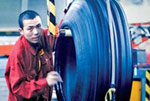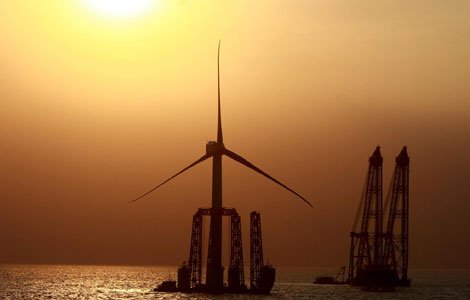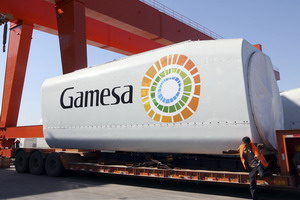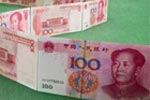China eyes overseas markets
Updated: 2011-09-07 13:25
By Ding Qingfen (China Daily)
|
|||||||||||
Hardly a day goes by without news of another foray by Chinese companies into overseas markets.
Far from being merely a major receiver of overseas direct investment for its cheap labor cost and huge market, China is now becoming an active and powerful overseas direct investor because of Chinese companies' expanding capacity and the country's huge foreign exchange reserves.
The Chinese government is confident of its outbound direct investment (ODI) increasing at a fast pace in the coming years.
Despite the decrease of 40 percent in the global foreign investment in 2009, China's ODI in the non-financial sector increased by 6.5 percent to $43.3 billion that year, helping China rise from 12th to the ninth largest outbound investing nation in 2008.
In 2010, China's ODI grew 36.3 percent from a year earlier to $59 billion.
Within three years, China's ODI will overtake its inbound direct investment, because it is expected to grow by between 20 to 30 percent, said Zheng Chao, commercial counselor at the Department of Outward Investment and Economic Cooperation of the Ministry of Commerce.
As part of its 12th Five-Year Plan (2011-2015), China has pledged to encourage more companies to expand their sales networks overseas and enhance their competitiveness in the next five years.
A United Nations Conference on Trade and Development report shows China is now a most attractive destination for overseas investment. By 2010, China's foreign direct investment (FDI) had reached $1.05 trillion, compared to $258.8 billion of accumulative ODI by then.
So far, much of China's outbound direct investment has gone to the Asia-Pacific region. It has also gone to Latin America, Africa and the European Union.
By 2009, 75.5 and 12.5 percent of China's accumulative ODI went to Asia and Latin America, according to the Ministry of commerce.
China's ODI to the EU and the United States has been rising at a fast pace.
Ministry of Commerce figures show China's ODI flowing into the EU and the US in 2010 surged by 297 and 81.4 percent to $2.13 billion and $1.39 billion. In contrast, overseas direct investment flowing into China increased by 36.3 percent during the same period.
"The United States, the European Union and Latin America will witness a rapid growth of investment from China", Zheng said.
Challenges ahead
But the robust growth of China's ODI cannot hide the challenges.
Political restriction is one of them. A report by the United States' Asia Society said that China's outbound direct investment is set to surge, with assets expected to reach between $1 trillion and $2 trillion across the world by 2020.
But the report is not optimistic about prospects of Chinese investment in the US, saying that the United States believes that Chinese investment is largely driven by political reasons rather than the profit motive.
An executive from Huawei Technologies Co Ltd said the company is interested in expanding in the US, but restrictions imposed because of political reasons are a major challenge.
Zheng said state governments in the US are showing growing interest in Chinese investment but "Congress isn't always welcoming".
A recent string of failed deals, including Minmetals' dropped $6.5 billion offer for Equinox and Sino-Steel's halted iron ore project in western Australia, have shown how challenging overseas ventures can be.
"Overseas investment is not only about injecting capital, it concerns many other factors, including technology, management, talents and rules and regulations," said Song Ligang, a researcher with Australian National University. "It's a long-term learning process."
Related Stories
Crisis creating ODI opportunities 2011-09-07 09:06
China's ODI up 21.7% to $68.81b in 2010 2011-09-06 17:24
August ODI rebounds after July decline 2011-09-01 07:56
ODI dips in July, year's first slide 2011-08-25 09:04
- Substandard mooncakes found
- Oil spills trigger environmental concerns
- China probes into steel tubes from EU, Japan
- PBOC may launch RMB QFII trials soon
- China to further facilitate investment
- Apple closer to offering 3G iPad 2 in mainland
- Call for stronger trade ties
- Provinces to face winter power shortages













